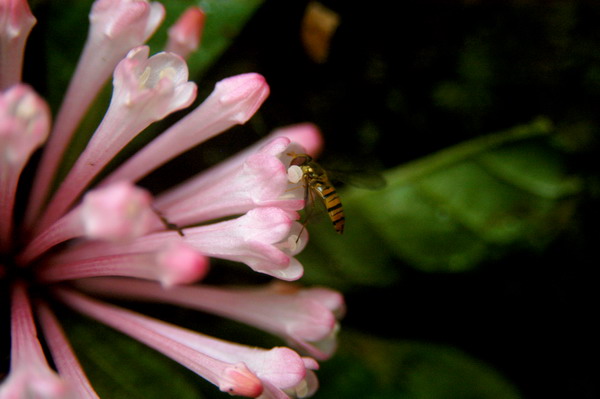The Study Progress of Pollination Biology of Guihaiothamnus acaulis (Rubiaceae), a Critically Endangered Species in China
Flower is the sexual reproductive organ of flowering plants. In the traditional theory of pollination biology, pollinators determine the evolution of flower traits. That is to say, suites of floral characters (including shape, color, scent, and reward), which are known as pollination syndromes, reflect the response to the selective pressure exerted by specific pollinating agents. Based on this concept, the pollinator of a given flower could be predicted by its pollination syndrome.
Guihaiothamnus acaulis Lo is one of the most endangered angiosperm species in China that distributes narrowly in the northeast of Guangxi Province. The flowers of G. acaulis are erect and radial, with pink and narrow trumpet-shaped corolla, well-hidden nectar, and imperceptible odor. All of these characters are thought to be associated with the butterfly pollination syndrome.To test whether G. acaulis is predominantly pollinated by butterflies, as suggested by its floral syndrome, the PhD student XIE peiwu from the Key Laboratory of Plant Resource Conservation and Sustainable Utilization led by Professor ZHANG Dianxiang in South China Botanical Garden CAS, carried out detailed field and lab experiments in 2009 and 2010.
The results revealed dipster (Episyrphus sp. and Baccha maculata) and hymenopter (Halictus sp.) insects were pollinators of G. acaulis. Butterfly was not the pollinator of G. acaulis, but visited the flower once during our observation period, suggesting G. acaulis flowers were attractive to them but the inadequate nectar would restrain them from visiting the flowers. We hypothesized that, based on the floral traits and our observations, butterflieswere one of the original pollinators of G. acaulis, however, for unknown reasons, the butterflies disappeared and new pollinators appeared to occupy the vacant niche. The loss of butterflies might result in the reduction of nectar, and more energy was saved for pollen production to adapt to the new pollen foraging pollinators. Except for the massive pollen per flower, G. acaulis had some other mechanisms to adapt to new pollinators and ensure its reproductive success, e.g. the expanded corolla throat, and the long-lived flowers.
The interaction of various factors, either intrinsic or extrinsic, would determine the phenotypic traits of a certain flower and affect the adaptiveness of plants to their pollinators. Therefore, all of these factors should be taken into account when using the pollination syndrome concept.
This work has been published in Journal of Systematics and Evolution (Xie et al., 2012, online published).

Episyrphus sp. visiting the Guihaiothamnus acaulis flower.
File Download: